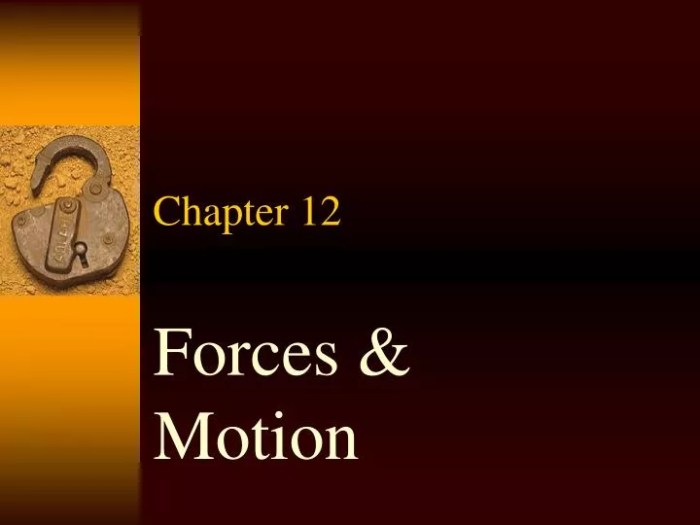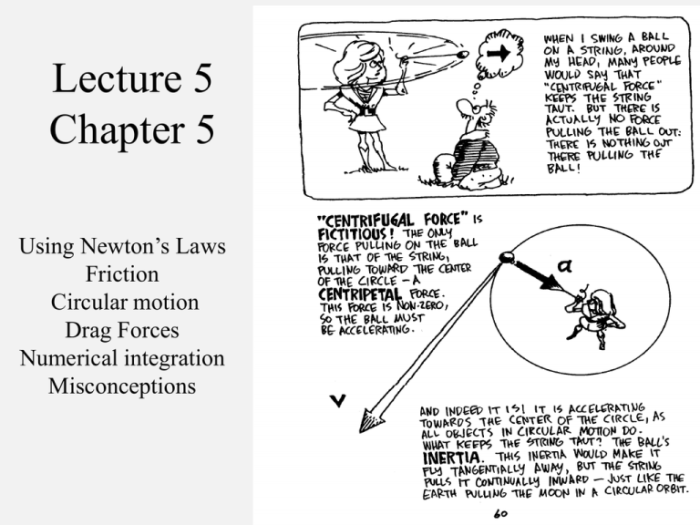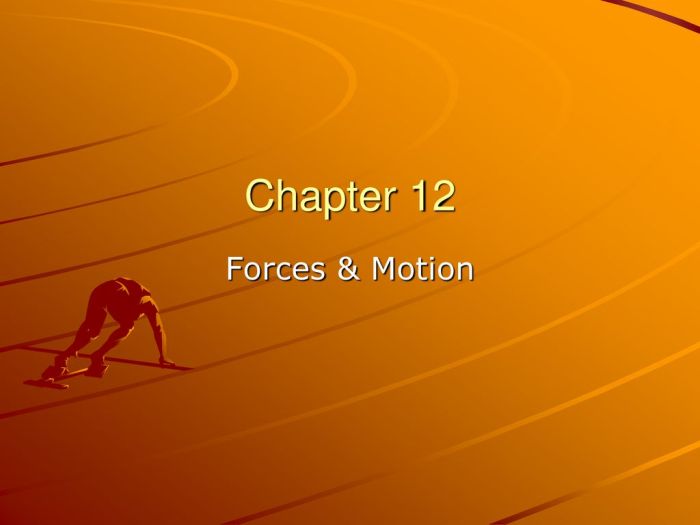Chapter 12 forces and motion wordwise – In Chapter 12: Forces and Motion, we delve into the fundamental concepts that govern the behavior of objects in motion. This chapter provides a comprehensive overview of the principles of classical mechanics, tracing their historical development and exploring their applications in everyday life.
From Newton’s groundbreaking laws of motion to the analysis of various force types, we will uncover the intricate relationship between forces and the resulting motion of objects. By understanding these principles, we gain a deeper appreciation for the world around us and the forces that shape it.
Chapter 12 Overview

This chapter introduces the fundamental concepts of forces and motion, laying the groundwork for understanding the behavior of objects in the physical world. It explores the historical development of force and motion theories and establishes the principles of classical mechanics that govern the interactions between objects.
Newton’s Laws of Motion

This section presents Newton’s three laws of motion, which are the cornerstone of classical mechanics. These laws provide a framework for understanding the relationship between forces, mass, and the resulting motion of objects. Newton’s first law, the law of inertia, describes the tendency of objects to resist changes in motion.
The second law, F=ma, quantifies the relationship between force, mass, and acceleration. The third law, the action-reaction law, highlights the paired nature of forces.
Types of Forces, Chapter 12 forces and motion wordwise
This section identifies and explains different types of forces that act on objects in the physical world. These include gravitational force, frictional force, tension force, and other types of forces. The characteristics and effects of each force type are discussed, providing a comprehensive understanding of the diverse forces that influence motion.
Motion Analysis

This section explores the concepts of displacement, velocity, and acceleration, which are essential for describing the motion of objects. The equations of motion are introduced, providing a mathematical framework for analyzing motion. Graphical representations of motion are also discussed, demonstrating how to visualize and interpret the motion of objects.
Applications of Force and Motion: Chapter 12 Forces And Motion Wordwise

This section highlights the practical applications of force and motion in everyday life. It explores the use of force and motion in engineering, sports, and other fields, demonstrating the relevance and importance of these concepts in various aspects of our world.
Essential Questionnaire
What are the three laws of motion formulated by Isaac Newton?
Newton’s three laws of motion are:
- An object at rest will remain at rest unless acted on by an unbalanced force.
- The acceleration of an object is directly proportional to the net force acting on the object and inversely proportional to its mass.
- For every action, there is an equal and opposite reaction.
What are the different types of forces that can act on an object?
There are many different types of forces that can act on an object, including:
- Gravitational force
- Frictional force
- Tension force
- Normal force
- Spring force
What is the equation for calculating the acceleration of an object?
The equation for calculating the acceleration of an object is:
a = F/m
where:
- a is the acceleration of the object (in meters per second squared)
- F is the net force acting on the object (in newtons)
- m is the mass of the object (in kilograms)